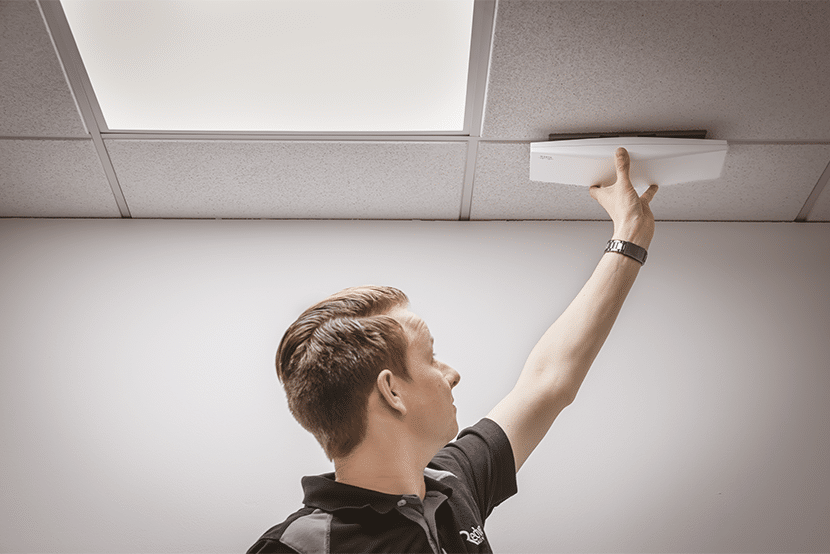Why WiFi is Essential in Education
Most homes these days are host to excellent connectivity, running multiple streaming services, intelligent home systems like Nest or Hive, as well as supporting multiple devices per household member, from wearable tech like Apple Watches to smartphones, laptops, tablets and more. This is not an unusual setup, and users expect their WiFi to support these functions.
In contrast, the same cannot be said of educational environments. Many schools, colleges and universities are using legacy wireless technology that limits connectivity, and the student experience. Some are still using wired solutions. The drawback is that these limitations hinder the learning, working and socialising potential of students and staff. Having a wired network, in particular, makes a whole generation of classroom technology simply unusable.
- Untethered, agile learning
Just as members of a household both enjoy and expect limitless connectivity from anywhere in the house, so too in education WiFi should facilitate immediate, unlimited access to online learning resources and applications from anywhere in the school, college or university premises. Educators are rapidly adopting laptops, tablets, and cloud-based apps/resources for lesson delivery, with a dramatic rise since the covid-19 pandemic started. All of these tools rely on wireless connectivity, making your IT network the bedrock of your whole educational strategy.
Supporting 1:1 devices for personalised learning
- Supporting 1:1 devices for personalised learning
Teachers can encourage independent and self-initiated learning among students, both in and outside the classroom, whilst also developing creative ways of teaching. WiFi and the use of 1:1 devices also enables the use of software that monitors student progress in real-time and allows teachers the chance to intervene to assist students where necessary – before the student shows clear signs of falling behind, such as poor test results. The same early intervention can be taken with issue such as bullying or poor mental health. Such instant feedback mechanisms require wireless technologies in the classroom, permitting 1:1 learning.
- Improving communication between teachers, students and staff
WiFi in education establishments breaks down communication barriers, too, as its portability enhances collaboration between students and students and teachers, and inspires parental engagement by strengthening the home-school interface. Many students find it easier to engage through digital devices, so removing this opportunity is a lost chance to improve student wellbeing and education.
- The gap between schools with and without EdTech
A research study from Oxford University found that many children face academic disadvantage through not having internet access in their homes, despite owning personal devices that are internet-facing. This divide was highlighted during the pandemic, where many students were unable to partake in remote learning, hugely impacting their educational progression. For these children, access to connectivity and the wider world is especially vital at school.
Sadly the 2022 Promethean report exposed a clear mismatch between the recognised value of EdTech for teachers and pupils, and the percentage of school budgets being put towards it. 90% of teachers agree tech is a great way to engage students, but around 50% say not enough is being spent on EdTech. We imagine this figure will rise starkly in 2020 and beyond as the need to keep learning semi-remote, multi-device and agile continues.
- Underpinning learning excellence with future-focused IT
Closing this gap and bringing agile learning to students, however, can only take place if there is a future-ready, reliable, and secure wireless connection. Old networks cannot deliver performance to the hugely rising number of inter-connected devices, as they simply do not have the bandwidth needed. Using legacy networks for increasingly advanced numbers and types of technology will result in slower speeds, connectivity dropouts and security risks.
If you’d like advice on troubleshooting, surveying, designing or installing WiFi in a school, MAT, college or university, you can find free advice, e-books on ‘WiFi in education‘ and contact information on our education sector services page.


